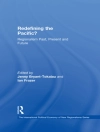The government’s first Cooperative Threat Reduction (CTR) programs were created in 1991 to eliminate the former Soviet Union’s nuclear, chemical, and other weapons and prevent their proliferation. The programs have accomplished a great deal: deactivating thousands of nuclear warheads, neutralizing chemical weapons, converting weapons facilities for peaceful use, and redirecting the work of former weapons scientists and engineers, among other efforts. Originally designed to deal with immediate post-Cold War challenges, the programs must be expanded to other regions and fundamentally redesigned as an active tool of foreign policy that can address contemporary threats from groups that are that are agile, networked, and adaptable. As requested by Congress, Global Security Engagement proposes how this goal can best be achieved.To meet the magnitude of new security challenges, particularly at the nexus of weapons of mass destruction and terrorism, Global Security Engagement recommends a new, more flexible, and responsive model that will draw on a broader range of partners than current programs have. The White House, working across the Executive Branch and with Congress, must lead this effort.
Committee on International Security and Arms Control & Committee on Strengthening and Expanding the Department of Defense Cooperative Threat Reduction Program
Global Security Engagement [PDF ebook]
A New Model for Cooperative Threat Reduction
Global Security Engagement [PDF ebook]
A New Model for Cooperative Threat Reduction
¡Compre este libro electrónico y obtenga 1 más GRATIS!
Idioma Inglés ● Formato PDF ● Páginas 180 ● ISBN 9780309131070 ● Editorial National Academies Press ● Publicado 2009 ● Descargable 3 veces ● Divisa EUR ● ID 7141157 ● Protección de copia Adobe DRM
Requiere lector de ebook con capacidad DRM












